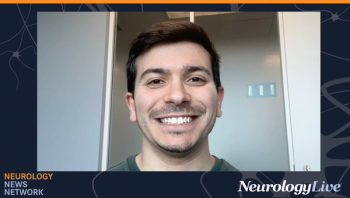
Controlling Seizures Through Medication
Trevor Resnick, MD: There’s a population of patients with epilepsy [for whom] you make a diagnosis [and] put them on treatment, and their seizures are controlled as long as they take their medication. And that applies to about two-thirds of the patients we see, and those are the patients we love to take care of because it’s very gratifying. As long as they take their medication, they are seizure-free. And in many of them, after a period of time of being seizure-free, you could actually take them off their medication, and they can maintain their seizure freedom even off medication. In other words, they are so-called cured. Then there’s that [portion] of patients [who] are the difficult-to-control population, [the] one-third of the patients [for whom] you try different medications. It’s difficult getting to the point of being seizure-free. Even under the best circumstances with 1, 2, or 3 medications, you may still get them [only] to the point where they have seizures maybe once a month [or] once every 2 months. And for some patients, even weekly or daily.
Generally, those patients who have poorly controlled seizures or difficult-to-control seizures have more epileptic brains. They may have structural abnormalities in their brains, and they have genetic forms of epilepsy [in which] the seizures are difficult to control, and it’s that group of patients [that] is very difficult. It’s difficult for the patients. The seizures affect them cognitively [and] psychologically. They frequently have other morbidities, such as depression, anxiety, [and] agitation, and for them epilepsy is but 1 part of their disease.
Both lacosamide and perampanel are very gratifying additions to our armamentarium. They’re both very good drugs. Perampanel specifically has an advantage of having a long half-life. So from a compliance standpoint, it’s great. And specifically in terms of its effectiveness for generalized seizures, both partial, both secondary generalized seizures and primary generalized seizures, have a very robust response. So in terms of compliance, having you take it [only] once a day and its effectiveness for generalized seizures, that’s where I really see perampanel as being very effective. It’s also very effective for partial seizures, but there are lots of medications that are available for partial seizures. That’s really where it fits in from an effectiveness standpoint.
As you get to use higher doses of perampanel, though, it does have the [adverse] effect of agitation, irritability, and even homicidal ideation rarely. So that’s something you have to watch, and it is more likely to occur as you increase the dose and get to higher doses. But in many patients, they are well controlled even on lower doses. So I think the focus there would be generalized seizures, whether they’re secondary generalized or primary generalized, and if you can get away with using lower doses. Lacosamide is a very well-tolerated drug that is effective for partial-onset seizures and partial complex seizures. And I see it as a very good addition in patients with partial complex seizures, even as first-line therapy, because of the fact that it’s very well tolerated.
Newsletter
Keep your finger on the pulse of neurology—subscribe to NeurologyLive for expert interviews, new data, and breakthrough treatment updates.



























